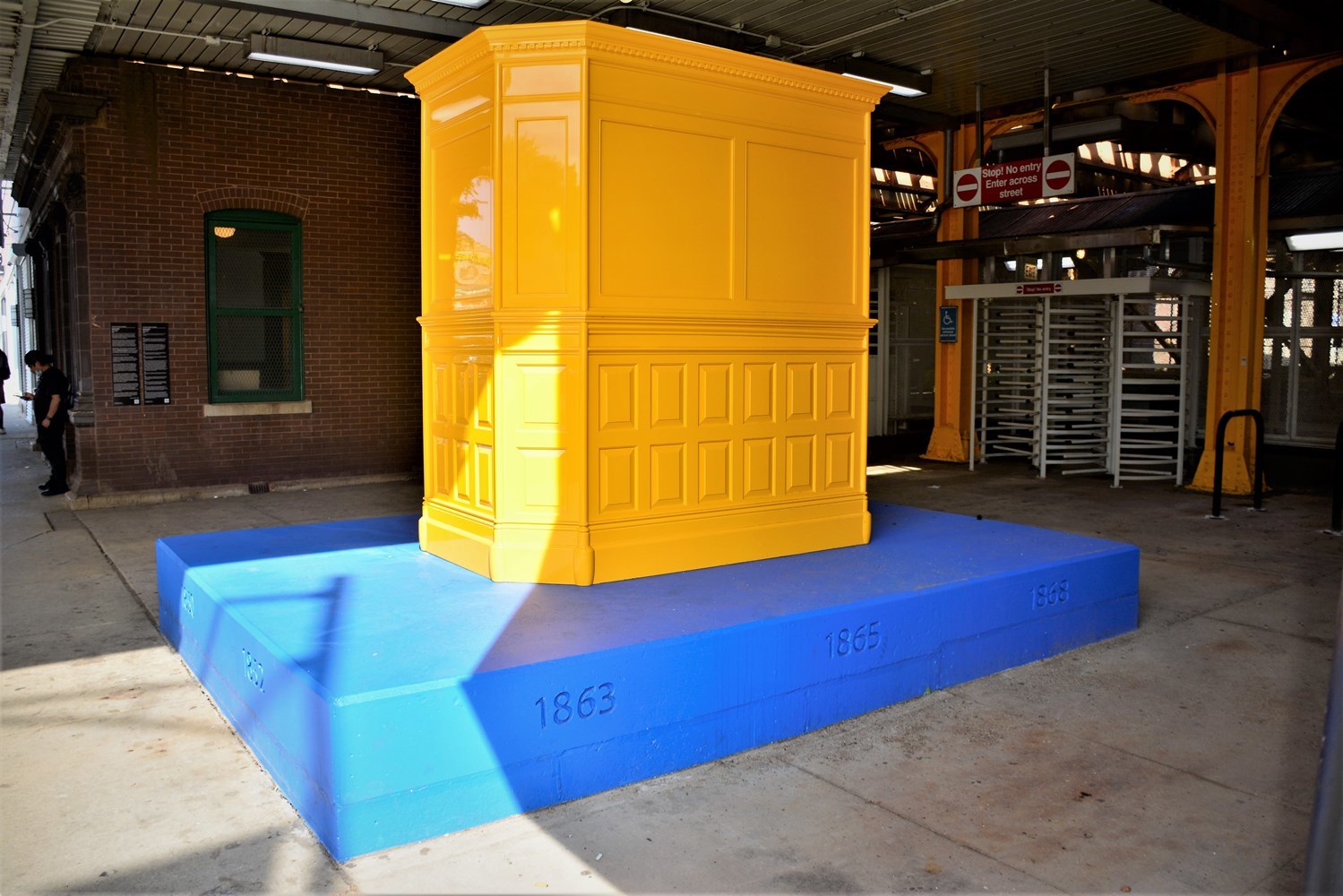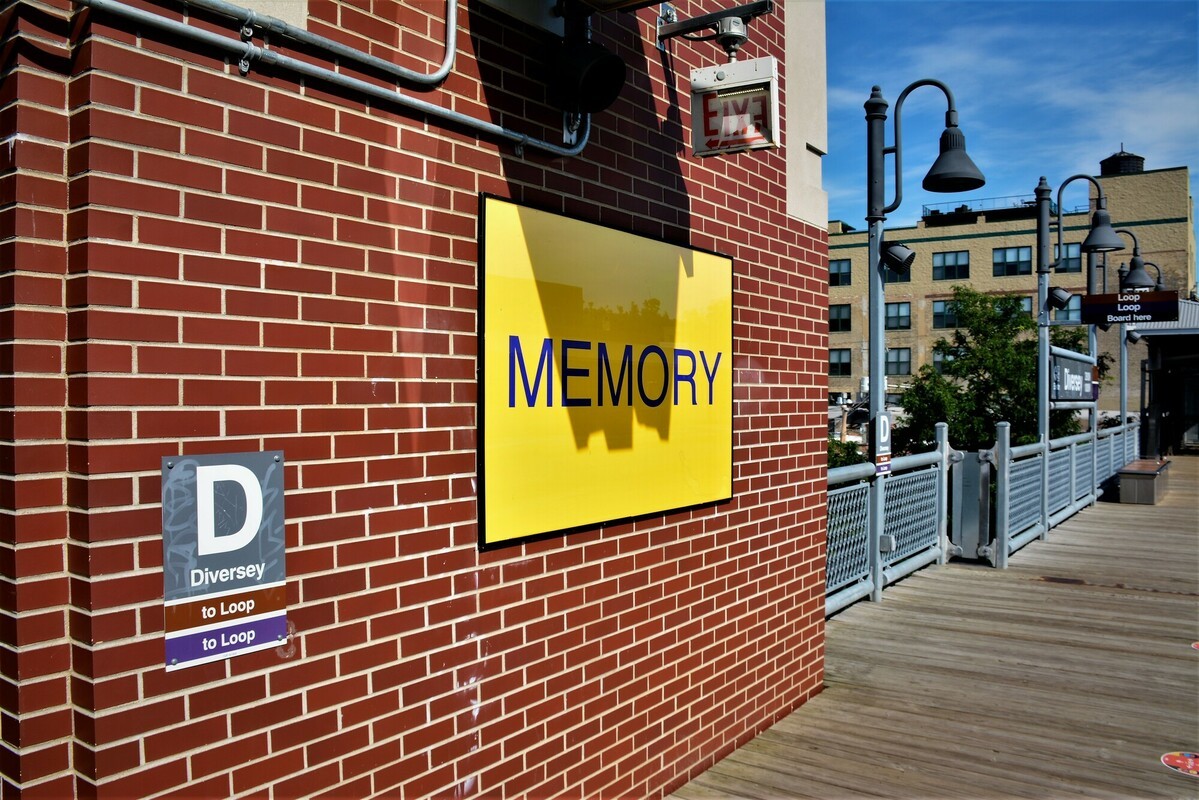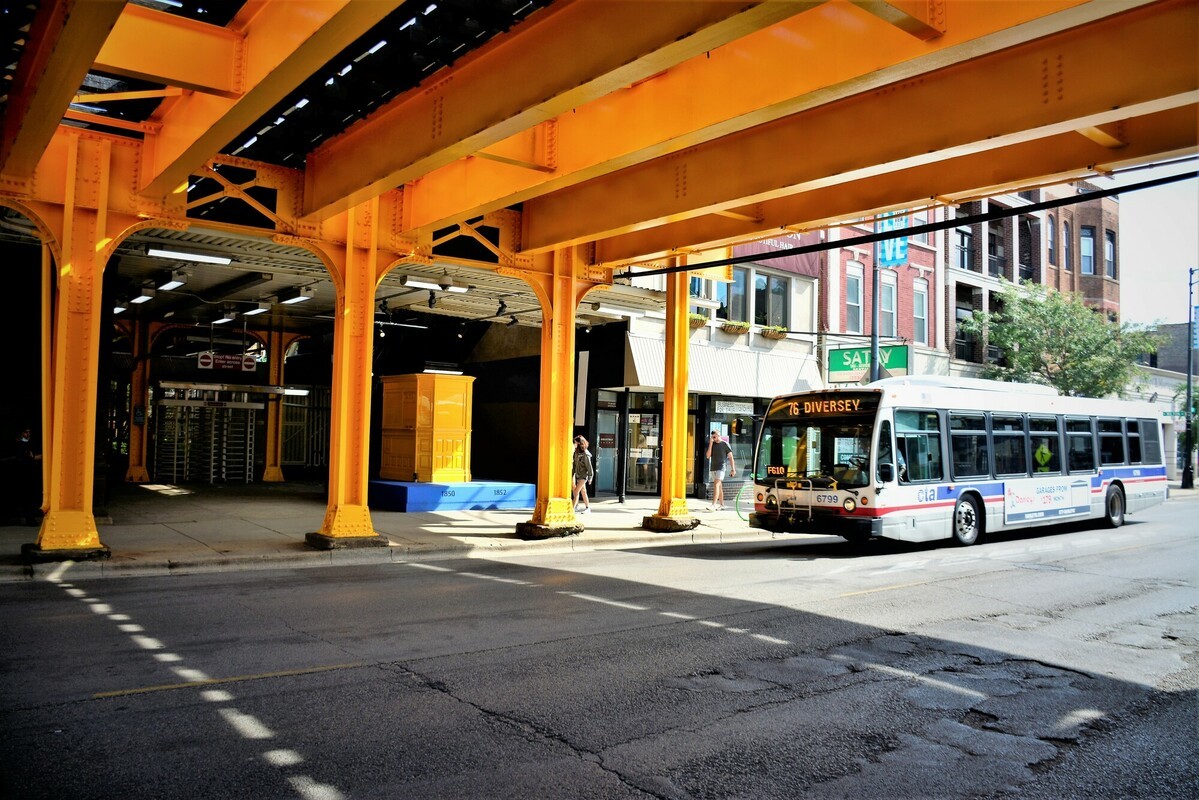
Ordinary Relic
Mathew Wilson
Mixed media
2020, Arts in Transit
Multiple elements displayed or integrated in the Diversey station engage a dialogue between the past and present, challenging the viewer to consider or reconsider public art, monuments, and cultural preservation.
Ordinary Relic is comprised of four elements: Painted track structure over Diversey Parkway; sculptural replica of the vintage ticket agent’s booth preserved inside the historic stationhouse; painted concrete plinth embossed with ten dates of local historic significance; and six message panels exhibited on the platforms and in the north-side stairways.

Dates featured in artwork
1824
The United States Army built a small post near the current intersection of Clybourn and Armitage Avenues. Native American settlements existed along Green Bay Trail, now named Clark Street (after George Rogers Clark), at the current intersection of Halsted Street and Fullerton Avenue.
1850
Birth of Frances Xavier Cabrini MSC (Italian: Francesca Saverio Cabrini). Known as Mother Cabrini, she was the first naturalized citizen of the United States to be canonized by the Roman Catholic Church, on July 7, 1946. Chicago's Cabrini–Green housing project, which has since been mostly torn down, was named after her, due to her work with Italian immigrants in the location.
1852
The German community was well-enough established to begin work on St. Michael's Roman Catholic Church, named for the patron saint of local brewer and land donor Michael Diversey.
1863
Cyrus McCormick sponsored the opening of the Presbyterian Theological Seminary of the Northwest in northwestern Lincoln Park; the school was later renamed for its benefactor.
1865
The area and the nearby park were renamed Lincoln Park for the assassinated president, immediately after his death. It began under inauspicious circumstances, as the land itself had first been a small public city cemetery. Victims of cholera and smallpox, as well as Confederate prisoners from nearby Camp Douglas and potentially thousands of others, were buried in these lakeside graves. As the neighborhood became more residential, citizens grew concerned about the potential health hazards caused by the standing water in the graves flowing into nearby Lake Michigan. Led by Dr. John Rauch, citizens in the area protested to ensure that the land was usable by the public. Dr. John Rauch’s efforts marked the beginnings of the park movement throughout Chicago. His efforts ultimately founded Lincoln Park, South and West Parks with the goal of creating a unified park system to encircle Chicago.
1868
The Lincoln Park Zoo was opened, making it among the oldest zoos in North America. It is one of a few zoos in the United States to offer free admission.
1898
St. Vincent's College, renamed DePaul University in 1907, opened near the McCormick Seminary. This intellectual center attracted other cultural institutions including the Chicago Academy of Sciences and the Chicago Historical Society.
1905
At this time Lincoln Park was a working-class neighborhood with a large German population. Lincoln Avenue was originally a trail called Little Fort Road, which led to the settlement of Little Fort, today’s Waukegan. The local Germans nicknamed the street Kaiser-Wilhelm-Straβe.
1954
The Lincoln Park Conservation Association was organized to serve the entire community area. LPCA pursued neighborhood renewal by encouraging private rehabilitation of property and the use of government tools such as federal urban-renewal funds and enforcement of the housing code. This might be considered the beginning of gentrification.
1969
Members of the Puerto Rican Young Lords and residents and activists mounted demonstrations and protested the displacement of Puerto Ricans and the poor including the demolition of buildings on the corner of Halsted and Armitage streets, occupying the space and some administration buildings at McCormick Theological Seminary. There were civil rights arrests and martyrs including the unsolved murders of United Methodist Rev. Bruce Johnson and his wife Eugenia Ransier Johnson who were strong supporters of the poor.

 Previous art: Wellington
Previous art: Wellington  Public Art Index Next art: Fullerton
Public Art Index Next art: Fullerton 
See also: Information about this station